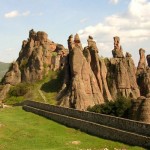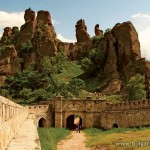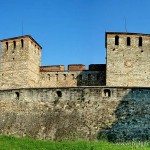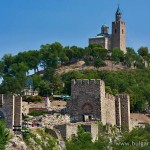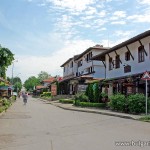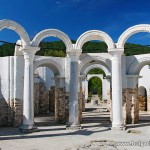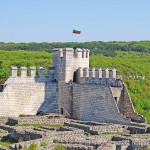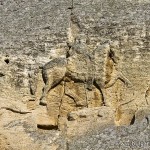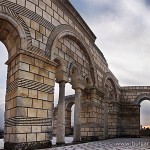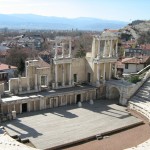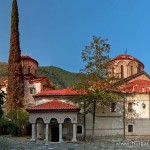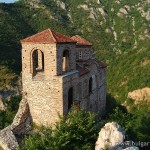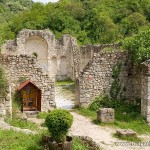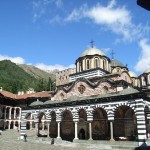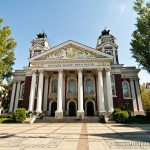Castles and Fortresses
This tour will present you the spectacular, well preserved Bulgarian fortresses, dating from many centuries ago.
Itinerary
Day-1
Arrival. Transfer to the hotel. Overnight.
Day-2
Breakfast. FD tour to Belogradchik fortress, constructed during the time, when the region was part of the Roman Empire and Belogradchik Rocks, with their incredible landscape. Tour of Vidin, where you will visit the famous Baba Vida Fortress. Overnight.
The Belogradchik Cliffs, an unique nature phenomenon, are roughly 30 km long and 6-7 km wide.
They were sculpted by natural forces over a period of more than 200 million years.
The Belogradchik Fortress is situated at a distance of 1.5 km from the
town of Belgradchik among the renowned rocks.
The fortress has existed since Roman ages. In 1st – 3rd century AD the Romans built roads in the new provinces of the empire on the Balkan peninsula, as well as fortresses to guard them.
The Babini Vidini Kuli fortress, also known as Baba Vida Fortress is situated on an area of 9.5 square km. on the bank of the Danube river, in the northern part of Vidin.
The fortress was raised upon the remains of the ancient town of Bononia. The construction of the medieval castle began during the second half of the 10th century, but during the Second Bulgarian Empire (the end of the 12th – 14th century) the basic construction was performed. The last Bulgarian king before the falling of Bulgaria under the Ottoman dominion, Ivan Sratsimir (1324– 1397) lived in the fortress.
Day-3
Breakfast. Transfer to Lovech – one of the oldest towns in Bulgaria. On the way we will stop for lunch in Pleven. Tour of Lovech fortress. Transfer to Veliko Tarnovo – the Town of Tsars.
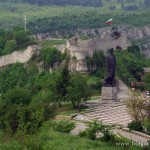 The Lovech Fortress lies on the two terraces of the beautiful and picturesque Hisarya Hill, in the old part of Lovech. The fortress was built in Roman times, but it is best known as the place, where the Lovech Peace Treaty with the Byzantine Empire was signed in 1186. It marked the birth of the Second Bulgarian Empire.
The Lovech Fortress lies on the two terraces of the beautiful and picturesque Hisarya Hill, in the old part of Lovech. The fortress was built in Roman times, but it is best known as the place, where the Lovech Peace Treaty with the Byzantine Empire was signed in 1186. It marked the birth of the Second Bulgarian Empire.
Day-4
Breakfast. FD tour of Veliko Tarnovo and Arbanasi, which has special role in the National Revival.
Veliko Tarnovo is one of the oldest towns in the country, as its history dates back to more than five thousand years, which is proven by the archaeological excavations.
The upsurge of Veliko Tarnovo is related to the period of the Second Bulgarian Empire (1185 – 1396). In 1185 the town was declared a capital of the restored Bulgarian State by the brothers Asen and Petar, which marked the end of the Byzantine dominion, that continued for 167 years.
After its selection for a capital, the town developed fast, as within the period 12th – 14th century it was the most unconquerable Bulgarian fortress, as well as a cultural and intellectual center of Bulgaria and the Balkan peninsula.
The village of Arbanasi is located on a high plateau 5 km from the city of Veliko Tarnovo.
It is known that the village existed during the time of the Second Bulgarian State (1185 – 1393). At that time the Bolyari (nobles) living in the capital Tarnovo used it as a summer residence. According to the legend, the Tsar of Tarnovo minted coins here.
Day-5
Breakfast. FD tour of Pliska, which is the first capital of Bulgaria, Shumen fortress, Madara Rider, which dates from the time of Khan Tervel and Preslav – the second capital of Bulgaria. Overnight in Shumen
Preslav was known as a spiritual and literature center, where the development of the Slavic written language and the Golden Age of Bulgaria during the rule of Tsar Simeon I (who reigned in the period 893 – 927) took place.
Shumen Fortress was probably first built by Thracians and was later
completed and reconstructed by Romans, Byzantines, and Bulgarians. It is believed, that the first fortification built in this place is 3200 years old, which makes it one of the oldest in Bulgaria.
Madara Rider – The most notable monument at the Madara reserve is the unique stone relief known as the Madara Rider. The relief depicts a horseman in a natural pose with a sword in his hand. At the feet of the horse is a lion, and behind the rider is depicted his hunting dog.
One legend has it that a Roman emperor was hunting on the plateau when he fell off the cliff and died. His relatives memorialized him by engaging a master to carve his image on the cliff.
Pliska, represents some incredible excavations of the oldest capital of Bulgaria. The big and the summer palaces of bulgarian rulers can be seen, as well as the royal temple and the fortification walls.
Day-6
Breakfast. Transfer to Plovdiv. HD tour. Overnight in Plovdiv.
Plovidv is considered to be one of the oldest cities in Europe. Here you will see remains of a Thracian fortress (5th century BC) and well preserved remains from the Roman times.
The Old Town is a marvelous site, with picturesque churches, the mosque and many houses with the architecture, the specific atmosphere and the spirit of Bulgarian Revival period.
Your guide will show you the fabulous remains from the Ancient Roman Empire – the Roman Stadium, the Roman Forum, the Amphitheater.
Day-7
Breakfast. Visits to the Asen’s Fortress, Bachkovo Monastery , the Agushevi Konatsi which date from the time of the Ottoman Empire. Transfer to the town of Gotse Delchev. Overnight.
Bachkovo Monastery – the second largest monastery in Bulgaria, which dates from the middle ages. The monastery was founded in the year 1083 by the Georgian Gregoriy Bakuriani, who donated the land. For a long time the monastery was Georgian.
Asen’s Fortress is the most interesting and often visited tourist attraction in the Asenovgrad region. It is located three kilometers from the city, on the top of a cliff, on the left bank of the Asenitsa River. The first written reference to the fortress dates from the founding of the nearby Bachkovo Monastery. At that time the Byzantine military commander Grigori Bakuriani dedicated the monastery and bequeathed to it the Petrich Citadel and the village next to it.
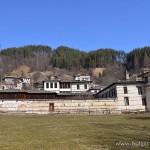 The largest late medieval feudal castle on the Balkan Peninsula – the Agushevi Konatsi – is situated in the Rhodope mountain.
The largest late medieval feudal castle on the Balkan Peninsula – the Agushevi Konatsi – is situated in the Rhodope mountain.
The building complex was built by three masters for some 20 years – from 1820 to 1840, for the rich Turkish feudal Salih Aga and his three sons. The castle has 221 windows, 86 doors and 24 chimneys.
Day-8
Breakfast. HD tour Melnik – the smallest town in the country, famous for its red wine, Rila Monastery – the biggest monastery in Bulgaria. Transfer to Sofia. Overnight.
The first written evidences for the Melnik Fortress refer to the beginning of the 11th century. The first settlers on the territory of contemporary Melnik were the Thracians, and more particularly the Thracian tribe Maedi, of which the legendary rebel Spartacus originated. Few centuries later the Romans lived on this ground. This is proved by the ancient Roman bridge, still preserved in the town of Melnik.
Rila Monastery was founded in the 10th century by St. John of Rila, a hermit canonized by the Orthodox Church. His ascetic dwelling and tomb became a holy site and were transformed into a monastic complex, which played an important role in the spiritual and social life of medieval Bulgaria. Destroyed by fire at the beginning of the 19th century, the complex was rebuilt between 1834 and 1862. A characteristic example of the Bulgarian Renaissance (18th–19th centuries), the monument symbolizes the awareness of a Slavic cultural identity, during the centuries of Otoman occupation.
Day-9
FD tour of Sofia, where you will enjoy the ancient and the modern city. Overnight.
Sofia – panoramic tour with transport and on foot, during which you will see the main sights – Alexander Nevski Cathedral, Parliament, Banya Bashi Mosque, The Synagogue, National Theater, Kings’ Palace
Day-10
Breakfast. Transfer to the airport.
Additional Days
You may add more days to your tour at special price for accommodation to explore Sofia by yourself or to join Zelanos one-day tours.
Prices: Upon request
-
Person in DBL / TRPL
-
Person in SNGL
-
Child 2 – 11.99 y.o.
-
Infant 0 – 1.99 y.o. – FREE
Included in the prices:
-
9 BB
-
Arrival, departure transfer
-
Seat in luxury mini-van or mini-bus
-
English speaking guide
-
English speaking chauffeur
-
All entrances in the sites visited during the tour
Supplements – optional:
-
Lunch
-
Dinner
-
Accommodation in 4* and 5* hotels supplement per person
Additional nights in Sofia, per person, per night:
-
Hotels 3*
-
Hotels 4* / 5*
Notes:
Please, send request for rates
Optional excursions:
-
Wine tasting in Brestovitsa or Lyaskovets
-
Folklore Dinner in Plovdiv
-
Folklore Dinner in Sofia
-
Boyana church and National Historical Museum

